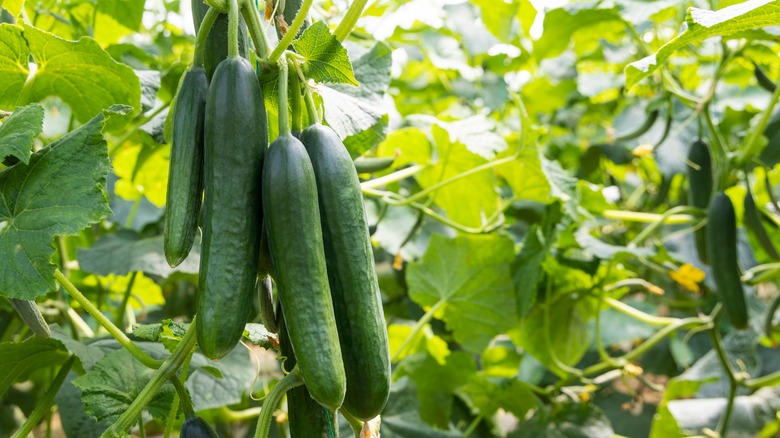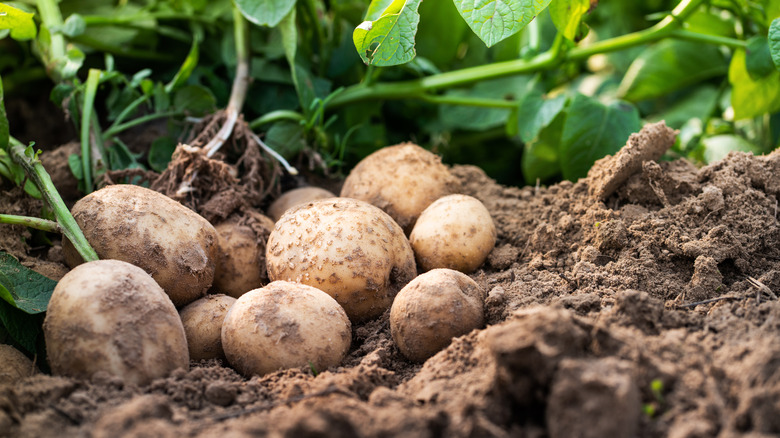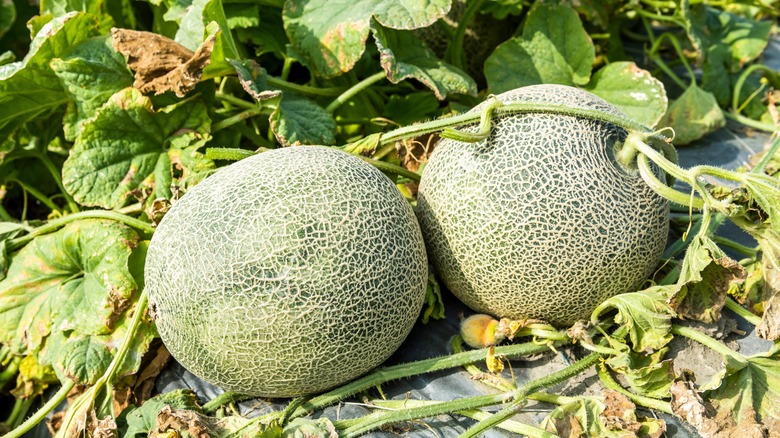Cantaloupe is one melon staple to grow each summer, giving us an unrivaled and distinct sweet flavor. While it’s relatively easy to grow, it can be particular in its needs, as it requires ample space, sunlight, and water. Due to cantaloupes’ demanding care, certain plants like cucumbers, watermelons, potatoes, and eggplants should not be used as companion plants. Cantaloupe does, however, perform well when paired with many other crops such as beans, carrots, lettuce, garlic, and cilantro. Companion planting has a lot of benefits for gardens, including that it’s great for space efficiency, it helps combat weeds, it can fend off pests, and it can assist in attracting beneficial pollinators. But just as you can encourage healthy growth by placing certain plants together, you can also create a recipe for disaster.
Planting cantaloupe with incompatible crops will result in them competing for nutrients, luring in harmful insects, and eventually one or both plants dying off from a lack of resources. When planted with the right produce, cantaloupes can help protect the roots and foliage of their neighbors. Unfortunately, not all fruits and vegetables should be paired with this melon if you are looking to have a flourishing garden.
Cucumbers and watermelons

Cucumbers and watermelons make poor companions for cantaloupes because they are both also vining plants that need a lot of space to grow. When forced to be neighbors, these crops will overcrowd one another, fighting for expansion and likely leading to the suffocation and depletion of one another. It won’t just be space that cantaloupes compete for; they will also be struggling to retain all their nutrients and enough sunlight as well.
Additionally, given that these plants are all in the cucurbit family, they will all attract the same pests. When planting crops side by side, it is helpful to pair those that are not susceptible to the same harmful insects or, better yet, plants that fend them off for one another. Cucumbers, watermelons, and cantaloupes all attract the same bugs and, therefore, will experience profuse pest damage. Squash bugs and pickle worms are a couple of the commonly-found pests in melons and cucumbers. Pickle worms especially can be a hazard as these caterpillars burrow into the crop and damage can often go undetected until harvest, in which case those fruits become inedible. Although placing these three plants together poses many issues, one misconception is that they could cross-pollinate, which is actually highly unlikely.
Potatoes and eggplants

Overall, cantaloupe plants are heavy feeders. This means that they have high nutritional needs and do not bode well next to other heavy feeders, such as potatoes and eggplants. Heavy-feeding plants will naturally combat one another for necessary nutrients, leading to the demise of one or both crops. From the nightshade family, potatoes and eggplants have moderately deep root systems and don’t do well in heavily moist soil. Conversely, cantaloupes have more shallow roots and prefer consistently damp conditions and frequent watering. Because they have opposite needs, each plant will not be able to receive the care they need and will therefore suffer.
Outside of the fact that potatoes and eggplants would likely drown and rot next to cantaloupes, they also attract similar pests. Aphids, wireworms, and flea beetles are shared among the three plants and are welcomed into gardens with open arms when these crops are placed together. Because of this, potatoes and eggplants should be planted far away from these melons. Cantaloupes will find companionship in plants that fend off pests they are susceptible to and those that prefer aerated, loamy, and damp soil conditions.




